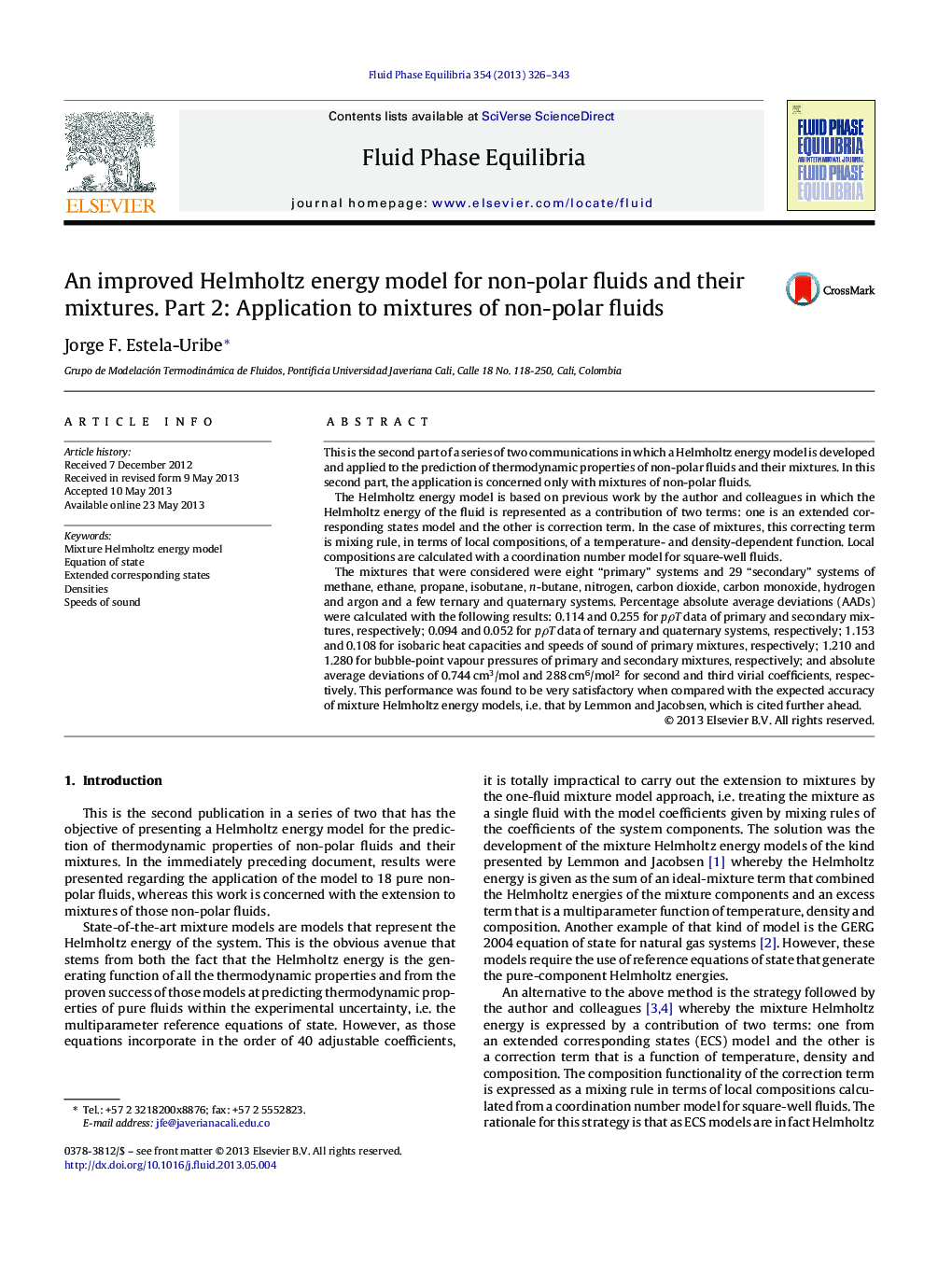| Article ID | Journal | Published Year | Pages | File Type |
|---|---|---|---|---|
| 203414 | Fluid Phase Equilibria | 2013 | 18 Pages |
•A Helmholtz energy model is presented for pure mixtures of non-polar fluids.•For pρT data of primary binary mixtures, the overall AAD was 0.116%.•Percentage AADs were 0.159 for speeds of sound and 1.210 for bubble-point vapour pressures of primary binary mixtures.•Results compared favourably with reference Helmholtz energy models for mixtures.
This is the second part of a series of two communications in which a Helmholtz energy model is developed and applied to the prediction of thermodynamic properties of non-polar fluids and their mixtures. In this second part, the application is concerned only with mixtures of non-polar fluids.The Helmholtz energy model is based on previous work by the author and colleagues in which the Helmholtz energy of the fluid is represented as a contribution of two terms: one is an extended corresponding states model and the other is correction term. In the case of mixtures, this correcting term is mixing rule, in terms of local compositions, of a temperature- and density-dependent function. Local compositions are calculated with a coordination number model for square-well fluids.The mixtures that were considered were eight “primary” systems and 29 “secondary” systems of methane, ethane, propane, isobutane, n-butane, nitrogen, carbon dioxide, carbon monoxide, hydrogen and argon and a few ternary and quaternary systems. Percentage absolute average deviations (AADs) were calculated with the following results: 0.114 and 0.255 for pρT data of primary and secondary mixtures, respectively; 0.094 and 0.052 for pρT data of ternary and quaternary systems, respectively; 1.153 and 0.108 for isobaric heat capacities and speeds of sound of primary mixtures, respectively; 1.210 and 1.280 for bubble-point vapour pressures of primary and secondary mixtures, respectively; and absolute average deviations of 0.744 cm3/mol and 288 cm6/mol2 for second and third virial coefficients, respectively. This performance was found to be very satisfactory when compared with the expected accuracy of mixture Helmholtz energy models, i.e. that by Lemmon and Jacobsen, which is cited further ahead.
